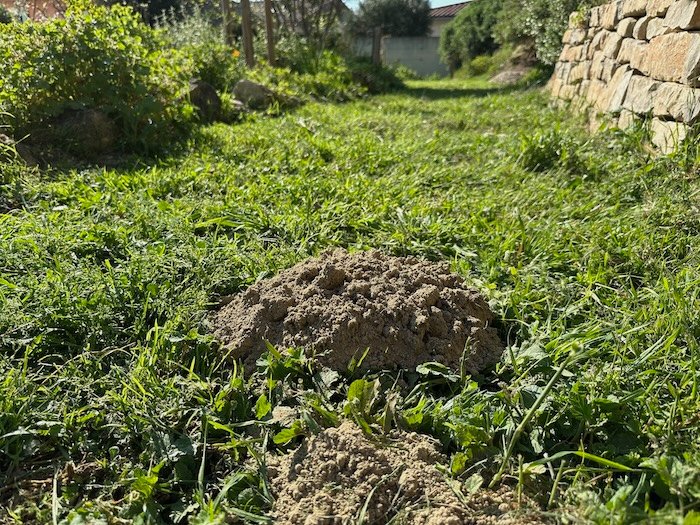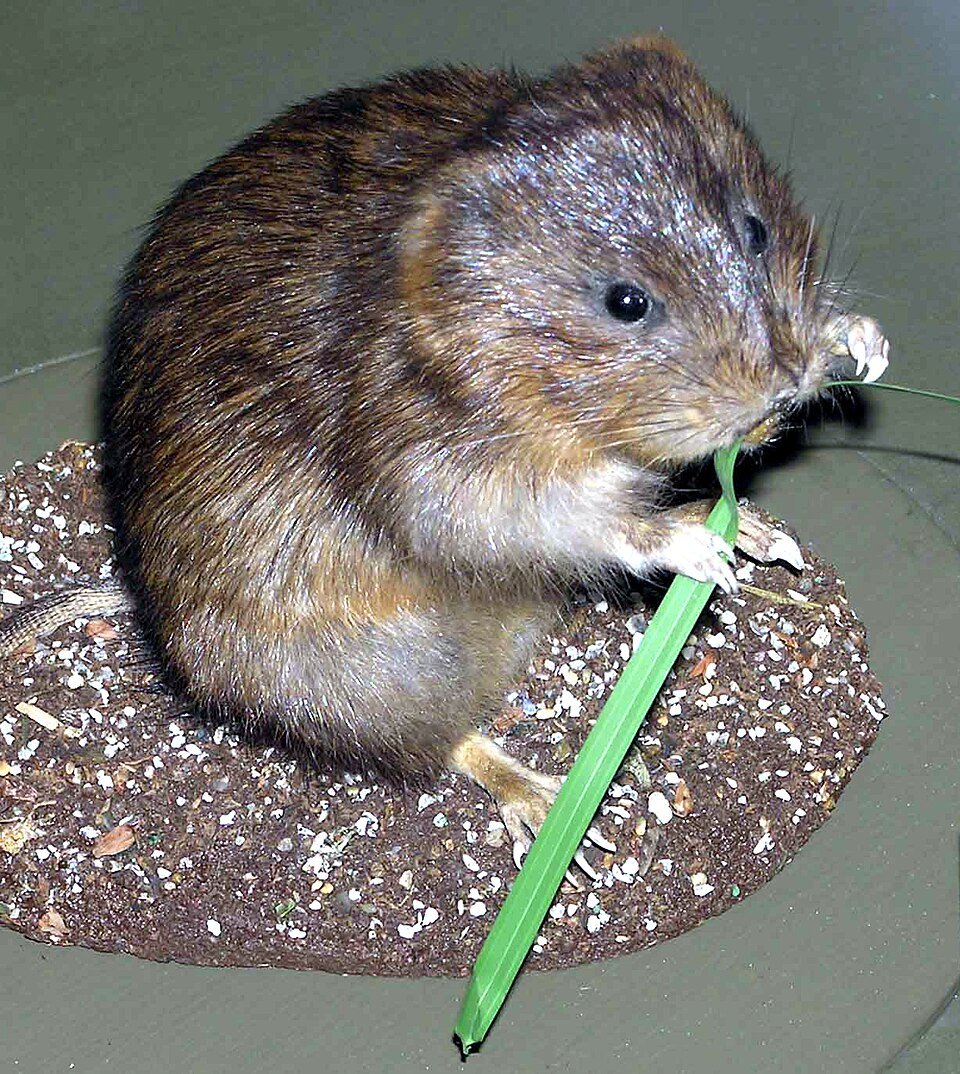I was not quite sure what they where or what to call them – those small animals of which I only ever see the holes or hills they make all over the garden. Along with the occasional corpse, thanks to the cats. Their names are confusing in French as well as in English and gardening sites mix them up frequently as well. So I did some research based on the evidence:
- relatively big angled holes all over the garden
- small to large heaps of earth all over the garden
- no damage to garden plants or vegetables
- corpses: mostly tiny and grey with pointy noses or rat-sized, with long dark hair. Once recognizably a mole.

From that evidence it appears that we have the following species living in the garden:
Mole / Taupe / Talpidae
Moles are 6-24 cm long. They have no visible ears, are more or less blind with tiny eyes, mostly have a short tail with few hairs, and broad shovel-like feet. They eat insects and worms. Their mole hills tend to be high and round with vertical entry holes directly underneath.
Shrew / Musaraigne / Soricidae
For a long time I thought, the cat brought in mouse babies. But they are actually tiny pointy-nosed shrews. Depending on variety (am thinking Suncus etruscus or Crocidura suavolens), shrews are 4-8 cm long, the tail measures another 2-4 cm and they weigh only 2-8 g. They eat insects, worms, larvae, and other live foods. They do not make hills.
Ground vole / Campagnol terrestre (Rat taupier) / Arvicola
Ground voles’ head and body measure 14–22 cm, plus a tail of 6-10 cm. They are a uniform brown colour, darker on top and a lighter grey-beige on the underside. Their body is stocky and roundish. The fur is quite thick and covers the whole body, including the tail (unlike rats’ tails which are naked). The ears are small and delicate, the nose is round. They have 4 fingers and 5 toes.
Voles live in grasslands but also like gardens and particularly fruit orchards. They eat the underground parts of plants: bulbs and roots, even those of trees.
Voles like to take over mole quarters but also dig out their own networks of underground galleries, which are not rectilinear as are those of moles, but anarchic. Their entry holes are angled, not vertical as those of moles. Their earth piles tend to be more scattered and contain a finer grain of soil than that of moles and they are not situated directly over the entry holes but next to them. Voles spend almost all their time underground. A study on traps showed that mostly juveniles leave their galleries during rainy nights.
And/or maybe those:
Common vole / Campagnol commun / Microtus arvalis
This vole is small and dark brown, with a short tail. Its head and body are 9-13 cm long, the tail 3-5 cm. They live in grassy meadows or in the grassy borders of agricultural field and eat above ground: grasses or plants like cereals, lettuce, chicory, artichokes, etc. as well as plant seeds. In orchards they may gnaw on the bases of trees.
Mediterranean pine vole / Campagnol provencal / Microtus duodecimcostatus
This vole measures 8-10 cm from head to base of tail, the tail is 2-3 cm long. The fur is dense and soft, a lighter yellowish grey-brown on the top and silvery grey on the underside. The tail is grey. The head is broad, the eyes medium-sized and the small ears are partly hidden by its fur. Its day-active and makes a large network of shallow tunnels, throwing up small piles of earth. It feeds on grass, clover, roots, and crop plants.
What to do About Rodents?
Well, good question. There are pages upon pages online with all kinds of advice from harmless expulsion to cruel extermination. Some also say that populations tend to wax and wane and that one can actually live with them. For now I tend to agree.
Moles and shrews don’t eat plants, so there’s no problem to fix there. The voles so far have not caused any noticeable damage to any plants (I’m knocking on wood as I write), so there’s no need to do anything there either.
The vole-/molehills are a bother only when they appear in the grassy spots (in the spring) or in the graveled parking lot. But the latter has been compacted quite a bit by now so we’ve not seen any more mounds there. When they appeared in the graveled parts of the vegetable garden last spring, I stomped around on them and they left. When they tunneled under a new tree, I put the watering hose down the hole for a half hour and they left. Other than that it’s just a matter of flattening the earth again or using it for planting soil.
Picture Wikipedia, public domain

Leave a Reply